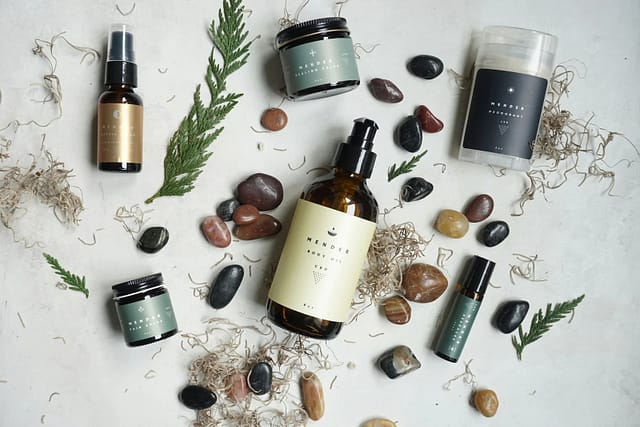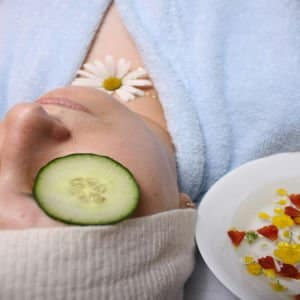
Introduction to Clean Beauty
Clean beauty refers to a holistic approach to personal care and cosmetics that emphasizes the use of products formulated without harmful chemicals. This movement advocates for transparency in ingredient sourcing and the importance of health-conscious choices in beauty routines. At its core, clean beauty prioritizes natural and non-toxic ingredients, steering clear of synthetic chemicals, parabens, phthalates, sulfates, and artificial fragrances, which can be detrimental to both individual well-being and the environment.
The growth of clean beauty can be attributed to a significant shift in consumer awareness regarding the ingredients found in beauty products. As individuals become increasingly informed about the potential risks posed by certain substances, the demand for transparency and safe formulations has surged. Clean beauty products are not only free from harmful chemicals but often also focus on ethical sourcing and environmentally sustainable practices, appealing to consumers who seek to minimize their ecological footprint.
Moreover, the benefits of switching to clean beauty products extend beyond merely avoiding toxins. Clean beauty often complements a healthier lifestyle, providing users with formulations that nourish the skin with beneficial plant-derived ingredients. These products may harness antioxidants, vitamins, and minerals that support skin health, promoting not only a radiant appearance but also overall well-being.
As the beauty industry evolves, clean beauty principles are gaining traction, leading to a new standard where consumers demand quality without compromise. This trend not only benefits individuals seeking a mindful approach to beauty but also encourages brands to prioritize safety and sustainability. Empowered by informed choices, consumers can confidently navigate the beauty landscape to select products that align with their values and lifestyle.
Why Clean Beauty Matters
The clean beauty movement has gained momentum in recent years, driven by a growing awareness of the potential health risks associated with conventional beauty products. These products often contain harmful ingredients such as parabens, sulfates, and synthetic fragrances, which have been linked to various health issues ranging from skin irritations to hormonal disruptions. By opting for clean beauty products, consumers can mitigate exposure to these toxic substances, promoting not only their well-being but also that of the planet.
Beyond health considerations, the environmental impact of the beauty industry cannot be overlooked. Traditional beauty products frequently contribute to pollution and waste, as many contain non-biodegradable plastics and are packaged in materials that do not break down easily. Clean beauty emphasizes the use of sustainable practices, including eco-friendly packaging and formulations that prioritize natural and organic ingredients. By choosing products with minimal environmental footprints, consumers can play a vital role in creating a healthier ecosystem.
Moreover, the ethical dimensions of clean beauty are increasingly significant in consumer decision-making. The clean beauty movement often advocates for cruelty-free practices, ensuring that no animals are harmed in the testing of products. This principle aligns with a more compassionate approach to beauty, promoting products that reflect consumers’ values. Many clean beauty brands also emphasize transparency, providing clear information about their sourcing and ingredient lists. This transparency fosters trust and empowers consumers to make informed choices about the products they use on their skin.
In light of these factors, the clean beauty movement signifies a shift towards more conscientious consumerism. By embracing clean beauty, individuals can safeguard their health, protect the environment, and support ethical practices in the beauty industry. The choice to use clean alternatives is not just a matter of personal preference; it is a statement about the values that consumers hold and their commitment to a healthier, more sustainable future.
Key Ingredients to Look For
In the realm of clean beauty products, the focus on wholesome and beneficial ingredients is paramount. These ingredients are often derived from natural sources, such as botanicals, essential oils, and organic compounds, each offering unique properties that contribute to skin, hair, and overall health. Understanding these components can help consumers make informed choices when selecting products that align with their values and health goals.
Natural botanicals are essential in clean beauty formulations, providing a wealth of nutrients and properties that promote skin health. For example, ingredients like aloe vera soothe and hydrate the skin, while chamomile is known for its calming effects. Botanicals such as green tea and rosehip oil are rich in antioxidants, which help protect the skin from environmental damage and support cellular health. Additionally, plant-based oils like jojoba and argan are celebrated for their moisturizing properties, making them ideal for dry or sensitive skin types.
Essential oils also play a crucial role in the formulation of clean beauty products. Essential oils like lavender, tea tree, and eucalyptus not only provide pleasant fragrances but also possess therapeutic properties. Lavender oil, renowned for its calming effects, can help alleviate stress and promote relaxation, while tea tree oil is famous for its anti-inflammatory and antibacterial qualities, making it a popular choice for acne treatment.
Moreover, organic compounds are another vital component found in clean beauty products. Ingredients such as shea butter and coconut oil are often included for their nourishing and moisturizing benefits. They help to restore the skin’s natural barrier, enhancing hydration and promoting a healthier appearance. Selecting products that prioritize these clean ingredients can lead to improved skin health and overall well-being, highlighting the importance of making educated choices when it comes to beauty and personal care.
Common Harmful Ingredients to Avoid
In an era where clean beauty products are gaining popularity, it is crucial to be aware of harmful ingredients that often lurk in traditional beauty products. Consumers are becoming more vigilant about the substances they apply to their skin, making it essential to understand common hazardous components such as parabens, sulfates, and phthalates. These ingredients may enhance product performance and shelf life, but they come with potential health concerns that cannot be overlooked.
Parabens, a group of synthetic compounds commonly used as preservatives in cosmetics, are notorious for their disruptive effects on hormonal balance. These chemicals can mimic estrogen in the body, leading to a range of health issues, including reproductive and developmental problems. In recent years, studies have suggested a correlation between parabens and increased breast cancer risk, further emphasizing the need to scrutinize product labels for these ubiquitous additives.
Sulfates, including Sodium Lauryl Sulfate (SLS) and Sodium Laureth Sulfate (SLES), are foaming agents often found in shampoos and cleansers. While they effectively remove dirt and oil, sulfates can strip the skin of its natural oils, leading to dryness and irritation, particularly for sensitive skin types. Long-term exposure may also result in skin barrier disruption, potentially exacerbating conditions such as eczema and acne.
Phthalates are another category of concern, frequently used as plasticizers in various consumer goods, including beauty products. These chemicals have been linked to endocrine disruption, which can affect both reproductive health and metabolism. With increasing evidence supporting these risks, many consumers are now opting to avoid phthalates altogether.
To make informed choices, it is essential to read ingredient labels carefully and seek out products explicitly labeled as “paraben-free,” “sulfate-free,” or “phthalate-free.” By doing so, consumers can protect their health and embrace a cleaner, safer beauty routine.
Top Clean Beauty Brands and Products
As the clean beauty movement continues to gain momentum, numerous brands have emerged, setting themselves apart by prioritizing natural ingredients and sustainable practices. These brands adhere to rigorous standards, ensuring that their products are free from harmful chemicals and toxins. Here, we highlight some of the leading clean beauty brands and their standout offerings, which have garnered positive customer reviews and contributed to the shift towards cleaner skincare options.
One of the most recognized names in clean beauty is Beautycounter. This brand has made a significant impact with its commitment to ingredient transparency and safety. Their popular Counter+ All Inclusive
Another noteworthy brand is RMS Beauty, known for its organic makeup products that embrace the philosophy of minimalism and purity. The Un Cover-Up concealer has received rave reviews for its lightweight texture and natural coverage. Users appreciate that it allows the skin to breathe while providing adequate concealment, showcasing RMS Beauty’s innovative approach to makeup that enhances rather than masks natural beauty.
Herbivore Botanicals is also a leader in the clean beauty space, offering a unique range of skincare products that incorporate vegan and cruelty-free ingredients. The Blue Tansy Resurfacing Clarity Mask is particularly popular, as it gently exfoliates and calms the skin. Positive customer feedback highlights how this mask helps to improve skin texture without the irritation often associated with traditional exfoliants.
These clean beauty brands exemplify the movement’s ideals by prioritizing clean formulations, sustainability, and community engagement. Their commitment to providing effective, non-toxic beauty products has made a significant difference in the industry, demonstrating that consumers can choose products that support both their skin and the planet.
How to Transition to Clean Beauty
Making the transition from conventional to clean beauty products can be an empowering journey towards healthier choices. The first step in this process is to evaluate your current beauty product inventory. Begin by examining the labels and ingredients of the products you currently use. Look for any harmful substances often found in traditional beauty items, such as parabens, sulfates, and phthalates. Familiarizing yourself with these toxic ingredients provides a solid foundation for understanding why you need to make a switch.
Next, educate yourself on what constitutes clean beauty. There are various certifications and standards that define these products. Clean beauty products are primarily formulated without synthetic chemicals, artificial fragrances, and potentially harmful preservatives. Common certifications include the EcoCert, Leaping Bunny, and USDA Organic labels, which can guide you in identifying safe options. Research brands that prioritize transparency and sustainability, as this will enhance the integrity of your clean beauty routine.
Once you are equipped with knowledge, the next step is to gradually replace conventional products with clean alternatives. It is often more practical to phase out products instead of an overnight overhaul, which can be overwhelming and costly. Start with items that you use frequently, such as cleansers, moisturizers, or makeup bases. As these products run out, replace them with clean beauty versions. This approach not only aligns with sustainable consumption but also allows you time to find the right products that suit your skin type and beauty needs.
Finally, consider keeping a journal to track your journey towards clean beauty. Document how your skin responds to the new products and adjust your routine accordingly. This reflective practice fosters a deeper connection to your beauty choices, ensuring a successful and informed transition to a toxin-free regimen.
Clean Beauty Myths Debunked
The clean beauty movement has gained significant traction in recent years, yet many misconceptions persist that can hinder consumers from embracing these healthier alternatives. One prevalent myth is that clean beauty products are less effective than their conventional counterparts. In reality, many brands prioritize natural and organic ingredients that have been shown to provide robust benefits for the skin. Research increasingly supports the efficacy of ingredients derived from nature, such as botanical extracts and essential oils, which can deliver comparable, if not superior, results without the harmful side effects often associated with synthetic chemicals.
Another common misconception is that clean beauty comes at a higher price. While it’s true that some clean products may be priced at a premium due to the cost of sourcing high-quality ingredients, there are numerous affordable options available. Many emerging brands strive to offer toxic-free products at competitive prices, making clean beauty accessible to a wider audience. It is essential for consumers to recognize that price does not always correlate with quality; many products provide effective solutions without breaking the bank.
Availability is also a concern for many consumers who believe clean beauty products are difficult to find. However, as the demand for clean and toxic-free choices has risen, many mainstream retailers have started to curate clean beauty selections. Large retailers, online platforms, and even local stores increasingly stock a wide array of clean beauty brands, making it easier than ever to explore and find suitable products. By debunking these myths, it becomes evident that clean beauty is a viable and beneficial option for anyone interested in enhancing their skincare routine. Recognizing the realities of clean beauty can empower consumers to make informed choices and fully embrace this transformative movement.
DIY Clean Beauty Recipes
Creating clean beauty products at home allows for a personalized skincare routine while ensuring that the ingredients used are safe and non-toxic. The following simple recipes utilize natural, readily available components that promote skin health without compromising on effectiveness.
One popular DIY clean beauty recipe is for a moisturizing face mask that combines honey, yogurt, and oatmeal. Start by taking 2 tablespoons of organic honey, which is known for its antibacterial properties. Next, add 2 tablespoons of plain yogurt, which contains lactic acid that naturally exfoliates and hydrates the skin. Finally, mix in 1 tablespoon of finely ground oatmeal, providing a gentle scrub effect. Combine all ingredients until you achieve a smooth paste. Apply the mixture to your face and let it sit for 15 to 20 minutes before rinsing with warm water. This mask is suitable for most skin types and is particularly beneficial for those prone to dryness.
Another great recipe is a natural sugar scrub for soft, glowing skin. You will need 1 cup of brown sugar, 1/2 cup of coconut oil, and a few drops of essential oils for fragrance, such as lavender or lemon. In a bowl, mix the brown sugar and coconut oil until they form a cohesive blend. Add your choice of essential oils, mixing well. This scrub can be used on your body, and it gently exfoliates while moisturizing the skin. To use, apply a small amount to damp skin, massage in a circular motion, and then rinse off with warm water.
These DIY clean beauty recipes not only empower individuals to take control of their skincare but also reduce reliance on commercially produced products. By using natural ingredients, users can enjoy transparency in their beauty routines and contribute to a more sustainable approach to personal care.
Conclusion: Your Clean Beauty Journey Begins
As we reach the end of this guide, it’s essential to reflect on the importance of embracing clean beauty as a lifestyle choice. The journey towards toxic-free beauty products is not only about superficial enhancements; it encompasses a commitment to health, wellness, and the environment. By making informed decisions about the products we apply to our skin, we empower ourselves to cultivate a safer and more mindful approach to beauty.
Staying educated about ingredients is paramount in the clean beauty movement. It is crucial to understand what goes into the formulations of the products we use daily. By familiarizing ourselves with common harmful substances and their potential effects on our health, we can confidently choose products that align with our values and needs. Knowledge is power, and as consumers, we hold the capacity to demand transparency from brands.
Supporting brands that prioritize clean, safe, and sustainable ingredients not only fuels your journey but also contributes to a broader cultural shift towards responsible beauty practices. Every purchase you make can reflect your commitment to better standards, encouraging more companies to adopt clean formulas. Therefore, it is vital to seek out products that have been reviewed and verified as free from toxic materials.
In conclusion, your clean beauty journey begins with the choices you make today. By adopting a conscious mindset towards skincare and makeup, you can foster a beauty routine that is both effective and safe. The clean beauty landscape is filled with exciting innovations and powerful options that not only enhance our appearance but also nurture our well-being. Embrace this journey with enthusiasm, and allow it to unfold in ways that elevate both your beauty experience and the world around you.

